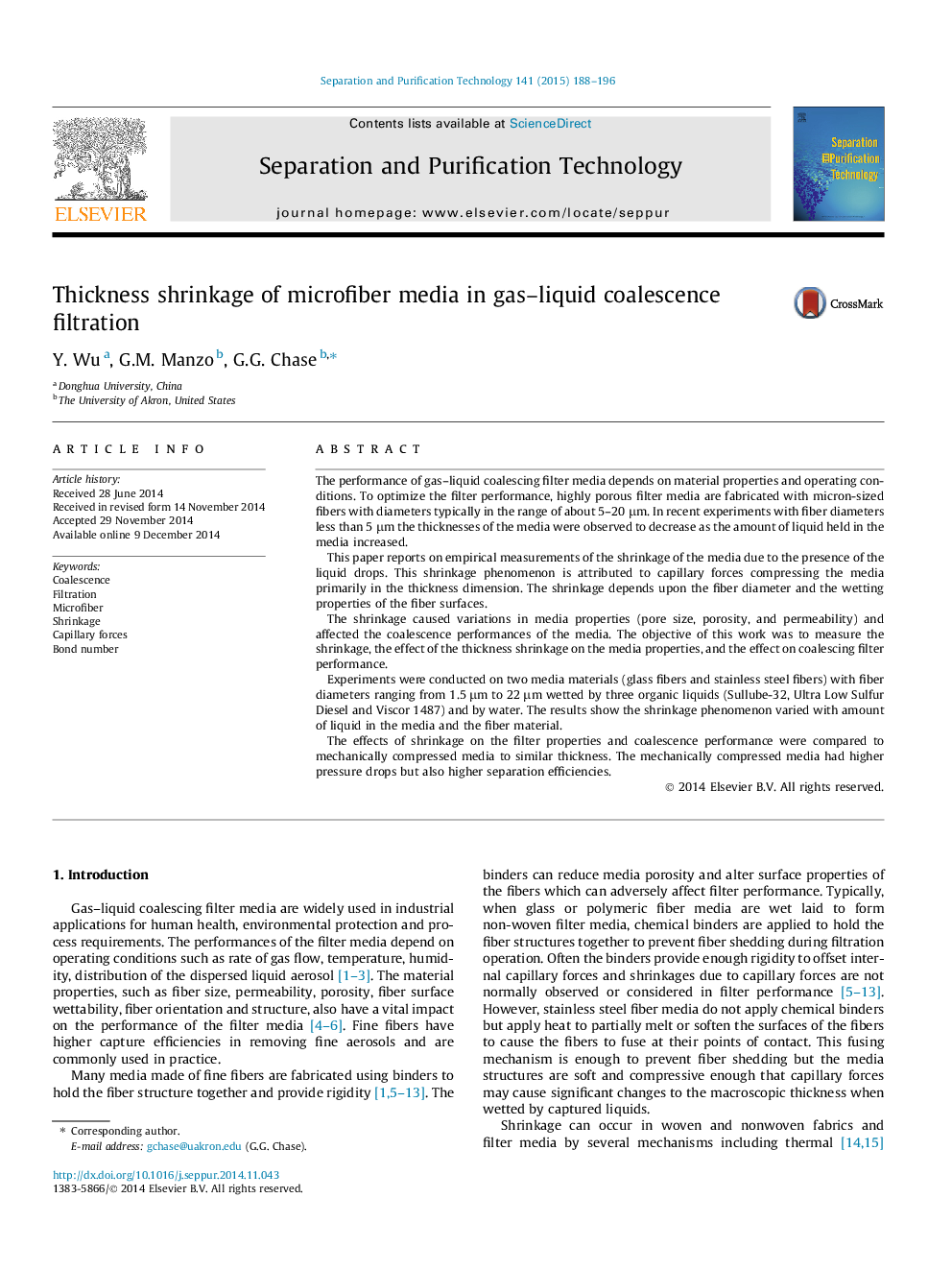| Article ID | Journal | Published Year | Pages | File Type |
|---|---|---|---|---|
| 640671 | Separation and Purification Technology | 2015 | 9 Pages |
•Nonwoven media of fibers less than 10 μm can shrink in thickness by capillary forces.•Shrinkage affects porosity and permeability.•Shrinkage can be related to the Bond number.•Shrinkage does not have same effect as compression on media performance.
The performance of gas–liquid coalescing filter media depends on material properties and operating conditions. To optimize the filter performance, highly porous filter media are fabricated with micron-sized fibers with diameters typically in the range of about 5–20 μm. In recent experiments with fiber diameters less than 5 μm the thicknesses of the media were observed to decrease as the amount of liquid held in the media increased.This paper reports on empirical measurements of the shrinkage of the media due to the presence of the liquid drops. This shrinkage phenomenon is attributed to capillary forces compressing the media primarily in the thickness dimension. The shrinkage depends upon the fiber diameter and the wetting properties of the fiber surfaces.The shrinkage caused variations in media properties (pore size, porosity, and permeability) and affected the coalescence performances of the media. The objective of this work was to measure the shrinkage, the effect of the thickness shrinkage on the media properties, and the effect on coalescing filter performance.Experiments were conducted on two media materials (glass fibers and stainless steel fibers) with fiber diameters ranging from 1.5 μm to 22 μm wetted by three organic liquids (Sullube-32, Ultra Low Sulfur Diesel and Viscor 1487) and by water. The results show the shrinkage phenomenon varied with amount of liquid in the media and the fiber material.The effects of shrinkage on the filter properties and coalescence performance were compared to mechanically compressed media to similar thickness. The mechanically compressed media had higher pressure drops but also higher separation efficiencies.
